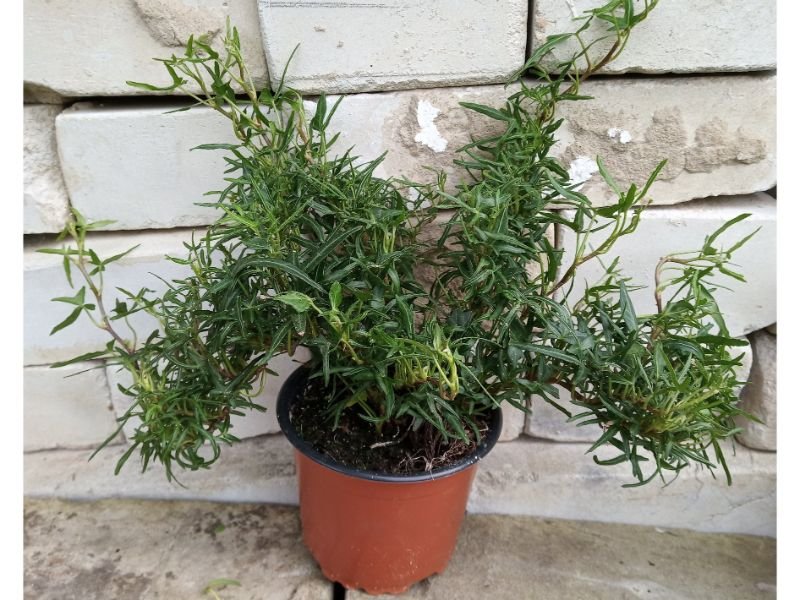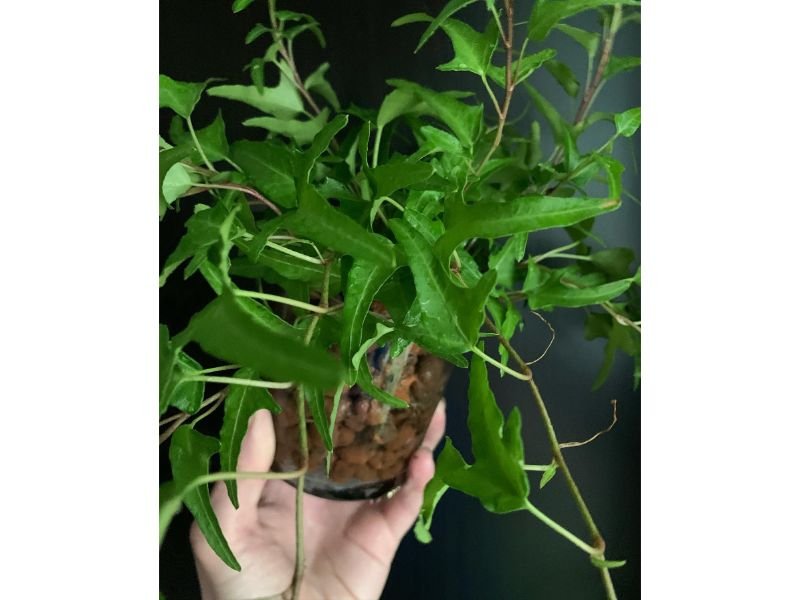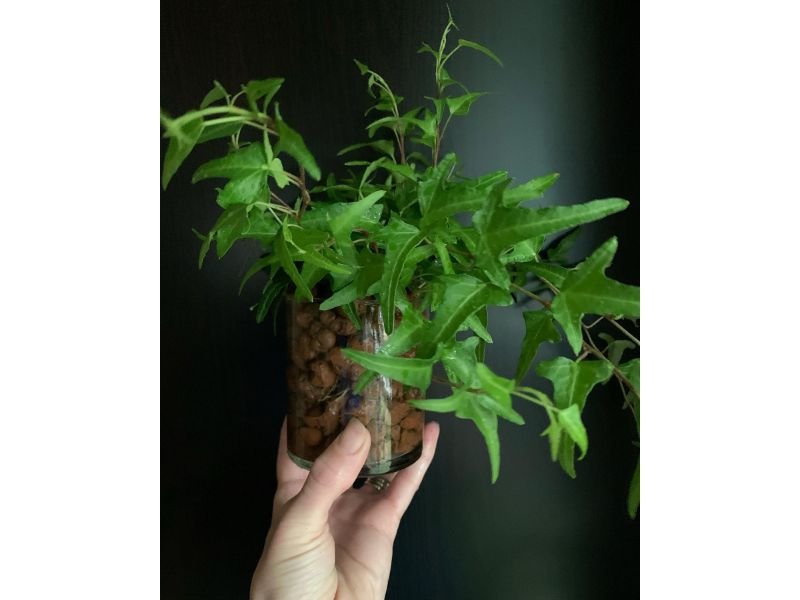Table of Contents
Introduction
Growing plants and maintaining a garden is one of the most fulfilling and rewarding activities that one can undertake. There is something special about seeing your hard work come to fruition in the form of beautiful flowers or lush green foliage. One plant that has been gaining popularity in home gardening circles is Starling Ivy, a unique and striking plant with many benefits for both indoor and outdoor spaces.

The Rise of Starling Ivy
Starling Ivy has been increasing in popularity due to its unique appearance and easy-to-care-for nature. This versatile plant can be grown indoors or outdoors, making it perfect for those who are looking to add some greenery to their living spaces without having to spend too much time on maintenance.
What is Starling Ivy?
Starling Ivy, also known as Hedera helix ‘Starling,’ is a type of ivy that features variegated leaves with shades of green, yellow, and white. The distinctive coloration on the leaves makes it an eye-catching addition to any garden or indoor space.
The Benefits of Starling Ivy
Not only is Starling Ivy visually stunning, but it also offers many benefits for those who choose to grow it. It acts as an air purifier by removing toxins from the surrounding environment while releasing oxygen back into the air.
Additionally, it can help reduce noise pollution by absorbing sound waves within its foliage. If you are looking for a low-maintenance plant that provides aesthetic appeal along with other benefits like air purification and noise reduction – look no further than Starling Ivy!
Characteristics of Starling Ivy
The Appearance of Starling Ivy
Starling ivy, also known as Hedera helix ‘Starling’ Ivy, is a stunning plant with unique leaves that are green and grayish-white in color. These leaves are glossy and have a waxy texture.
Their shape is pointed and has five lobes that radiate out from the center of the leaf. The plant has a trailing growth habit which makes it perfect for hanging baskets or training up walls.
The Growth Habits of Starling Ivy
Starling Hedera is a fast-growing plant that can reach lengths of up to 30 feet if left to its own devices. It is an evergreen plant which means that it retains its foliage year-round and does not go dormant in the winter. It grows well in both indoor and outdoor environments.
Benefits of Starling Ivy
If you’re looking for an easy-to-care-for houseplant, starling ivy is an excellent choice. Its trailing growth habit makes it ideal for hanging baskets or training along windowsills or bookshelves.
Additionally, it is known for its air-purifying properties, making it an excellent addition to any indoor space where air quality may be compromised. Outdoors, starling ivy can be used as ground cover or allowed to climb up walls, adding a touch of greenery to your home’s exterior.
Hedera helix ‘Starling’ Ivy care

Light and Water Requirements
Starling ivy is a versatile plant that can grow in various light conditions. As a general rule, bright, indirect sunlight is best for this plant. Place it near a south or west-facing window if possible but keep it away from direct sunlight to avoid leaf damage.
When it comes to watering, the amount of water needed depends on several factors such as temperature, humidity level, and the size of the pot. Overwatering is one of the most common mistakes people make when caring for starling ivy.
This can lead to root rot and other issues that can harm the plant’s health. To avoid overwatering or underwatering your starling ivy, always check the soil’s moisture level before watering again.
You can do this by sticking your finger 1-2 inches deep into the soil; if it feels dry at that depth, then it’s time to water your plant. If you’re unsure how much water your starling ivy needs, a good rule of thumb is to water once a week but adjust accordingly based on environmental factors.
In winter when there’s less light and cooler temperatures prevail, you may need to cut back on watering frequency. By providing adequate sunlight and appropriate amounts of water for your starling ivy, you’re setting it up for success and helping ensure its healthy growth for years to come!
Soil and Fertilizer Needs
The Ideal Soil Conditions for Growing Starling Ivy
Starling ivy requires well-draining soil that is rich in organic matter. The ideal pH range for the soil is between 6 and 7.5, which is slightly acidic to neutral.
It’s important to use a potting mix that is specifically designed for indoor plants and contains perlite or vermiculite to improve drainage. Avoid using heavy garden soils or soils that are too compacted as they will retain too much moisture and lead to root rot.
Appropriate Fertilizers to Use for Optimal Growth
To encourage healthy growth, it’s recommended to feed starling ivy with a balanced fertilizer every few weeks during the growing season (spring through fall). You can use a liquid fertilizer or slow-release granules mixed into the soil surface.
Be careful not to over-fertilize the plant as it can lead to leaf burn or other issues. In addition, you may want to supplement with additional nutrients like iron if your plant shows signs of yellowing leaves (a common issue in Starling Hedera).
You can find iron supplements at most garden centers or online, but be sure to follow the instructions carefully. Overall, providing well-draining soil and consistent fertilization will go a long way in ensuring your starling ivy thrives and looks its best.
Pruning and Propagation

Shaping and Sizing Your Starling Ivy
Pruning your starling ivy is an important aspect of caring for it, especially if you want to control its size and shape. To keep your plant from becoming too large, prune it back regularly by cutting stems at a 45-degree angle just above a leaf node. This will encourage new growth in the areas where you want the plant to fill out.
If you want to shape your starling ivy, cut it back more drastically on one side than the other. With repeated pruning, your ivy will become fuller and denser.
Propagating Your Starling Ivy
Propagating starling ivy is a relatively simple process that can help you expand your collection or share plants with friends and family. One way to propagate starling ivy is through stem cuttings.
Cut a few inches of stem with several leaves attached, dip the cut end in rooting hormone powder, and plant it in moist potting soil or water until roots form. Another way is to propagate through layering by bending one of the stems towards the soil at a point where there are nodes (where leaves meet the stem) without detaching it from the main plant.
Next cover this area with some soil or moss so that they hold moisture but do not suffocate or dry out this part of the ivy stem until roots emerge from this node area. With both methods, be sure to keep the new plants consistently moist until they are well-established in their new pots or planting locations.
Common Problems and Solutions
Bugs and Pests
One of the most common problems that can occur when growing starling ivy is bugs and pests. These can range from mealybugs to spider mites, which can be devastating to your plant’s health.
To prevent this, make sure you inspect your plant regularly for any signs of infestation. If you do notice some bugs or pests, try wiping the leaves down with a mixture of water and dish soap or apply some neem oil to repel them.
Yellow Leaves
Another issue that can arise when caring for starling ivy is yellowing leaves. This could mean that your plant is getting too much or too little water or sunlight.
To fix this issue, first, determine whether you need to adjust the lighting or watering schedule accordingly. You may also want to consider repotting your plant if it has become root-bound.
Mushy Roots
If the roots of your starling ivy start feeling mushy or soft, this could mean that it’s being overwatered. Overwatering can cause root rot and other fungal diseases that can quickly kill your plant. To prevent this from happening, make sure that you’re not watering your plant too frequently and allow the soil to dry out between waterings.
Dry Leaves
On the other hand, if you notice that the leaves on your starling ivy are starting to dry out or curl up, this could indicate that it’s not getting enough moisture. Make sure you’re watering it thoroughly each time but not overdoing it either. Overall, caring for a starling ivy isn’t too difficult as long as you keep an eye out for any issues and take action before they become serious problems!
Conclusion
Starling ivy is a beautiful and versatile plant that adds a touch of greenery to any indoor or outdoor space. By paying attention to its light, water, soil, and fertilizer needs, as well as pruning and propagation techniques, you can ensure your starling ivy grows healthily and thrives. Remember to be patient with your plant as it takes time to develop fully.
Overall, adding starling ivy to your home garden can help improve air quality and reduce stress levels while providing a decorative element that brightens up any room. So go ahead and try growing this magnificent plant- it’s sure to be a rewarding experience!

Gardening is my passion and growing plants indoors has always been a stress relief for me. Grow a banana tree in my apartment once (although failed to produce bananas).






